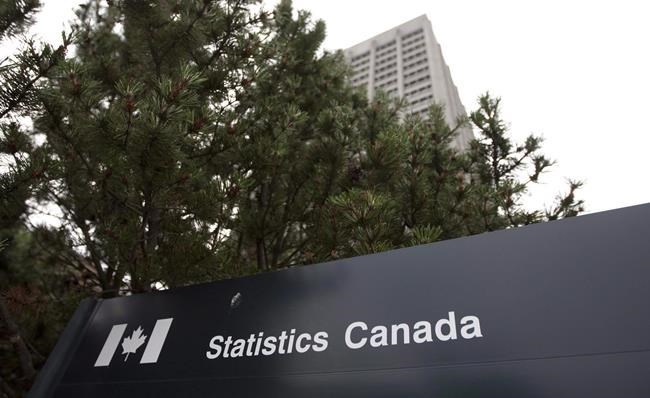OTTAWA — The Canadian economy grew at an annual rate of 6.5 per cent through the first quarter of the year, Statistics Canada said Friday, bringing the country tantalizing close to reaching pre-pandemic output.
The preliminary estimate for the first three months of the year was better than the contraction first forecasted months ago, but still represents a slowdown from the 9.6 per cent annualized growth seen over the last three months of 2020.
Service industries that have been hard-hit through the course of the COVID-19 pandemic showed a small gain in February, while goods-producing industries had a small contraction for the first time since last April.
With the 0.4 per cent gain in February — the 10th month in a row of gains following a historic drop in March and April 2020 — overall economic activity was about two per cent below the levels seen pre-pandemic in February 2020.
Taking into account the estimate of a 0.9 per cent increase for March, Statistics Canada says the economy last month was roughly one per cent below pre-pandemic levels.
Statistics Canada will finalize numbers for March and the first quarter of the year in June.
BMO chief economist Douglas Porter said the initial "robust" reads for March and the first quarter aren't too surprising, what is surprising is that real gross domestic product results keep landing on the high side of expectations.
"Let's put it this way," he wrote in a note, "the Bank of Canada's top-of-the-class 6.5-per-cent growth forecast for this year doesn't look at all unreasonable."
The central bank's most recent economic outlook estimated first-quarter growth at seven per cent annualized — a 9.5-point swing from its previous forecast of a 2.5-per-cent contraction — before falling to 3.5 per cent over the ensuing three months.
Governor Tiff Macklem cited the better-than-expected conditions as a reason why the Bank of Canada was easing the pace of federal government bond purchases, leading the way among central banks to scale back pandemic-era stimulus measures.
The central bank's outlook landed just after the federal Liberals tabled a budget with a more conservative 3.6-per-cent expectation for first-quarter growth.
What aided first quarter gains was an easing of public health restrictions that have since tightened to combat rising case counts during the third wave of the pandemic.
February's GDP numbers showed a division between goods-producing and service sectors. Retail jumped 4.5 per cent after two months of decreases, offset by declines in mining and gas extraction for first time in six months.
Manufacturing, too, pulled back 0.9 per cent in February after posting a 1.5 per cent increase one month earlier in January.
Sectors that provide goods for homes, like furniture and gardening equipment, and construction posted gains in February. Activity at real estate offices was up 3.4 per cent, hitting an all-time high on the back of a hot housing market.
Accommodation and food services grew 3.5 per cent in February after five months of declines as restaurants and bars benefited from an easing of restrictions.
CIBC senior economist Royce Mendes said the third wave should reverse much of the recent gains in high-contact service industries — even if February's figures suggest economic activity can quickly bounce back when the virus is contained.
He said policy-makers at the central bank and Parliament Hill are going to have to wait and see how bad this third wave of the virus is for the Canadian economy before making any moves.
"I don't think we have enough data just yet because of how quickly the situation is changing," he said in an interview.
The federal government on Friday tabled legislation to enact several measures in its budget, including extension to business aid programs and targeted help to hard-hit sectors.
Approval of the legislation requires the help of at least one major party in the House of Commons. Otherwise, the minority Liberal government would fall, triggering an election campaign.
"These measures will help you get through what is hopefully the last stretch of this pandemic," Prime Minister Justin Trudeau said at a midday press conference in Ottawa.
"This is about how we set ourselves up for a stronger, faster recovery that includes everyone. So all parties need to work together to get this support through the House of Commons to Canadians as soon as possible."
This report by The Canadian Press was first published April 30, 2021.
Jordan Press, The Canadian Press

